Dozens more schools are going without vital repairs after the proportion getting capital cash fell again – amid wider fears leaders are deciding not to bid for funding because “they feel it’s such a lottery”.
Just under 800 projects across 656 schools have been allocated money through the Department for Education’s £460 million condition improvement fund (CIF) this year. This is a slight increase on the £450 million assigned last year.
However, the number of schools getting cash has tumbled for a fifth year in a row. But the data shows successful schools are now having to stump up less of their own money to access funding.

Academy funding consultant Tim Warneford said: “This was the first Labour administration in 14 years, and the sector was optimistic [when they came in]. But this will come as a very bitter pill to swallow.
“It is a record low – it’s even worse than last year.”
CIF is only available to standalone academies or trusts with fewer than five schools wanting to keep a building “safe and in good working order”.
Larger academy chains and council schools get capital funding allocated automatically through a separate route.
Here’s what you need to know about this year’s funding round…
1. Fewer schools get capital cash (again)
Overall, 789 bids – across 656 schools – have been awarded CIF grants. The most popular appeared to be fire safety works (23 per cent). Others included roof works (13 per cent), boiler repairs (11 per cent) and asbestos-related projects (2 per cent).
Despite the slight rising in funding, both the number of successful applications and schools in receipt of the cash have fallen since last year (4 and 11 per cent respectively). These figures have fallen each year since 2020.
This is because the average grant awarded to successful project rose again. It now stands at almost £583,000, up from £489,000 12 months ago.
Of the 4,124 schools eligible for CIF, less than half (1,868) applied. Of those that lodged a bid, 35 per cent were successful.
This was slightly lower than in 2024 (36 per cent) and the year before that (41 per cent).
Warneford questioned why the number of applications “were so low”.
“Is it because they feel it’s such a lottery and can’t go through the heartache again? This is their only route to capital funding to address their condition issues.”
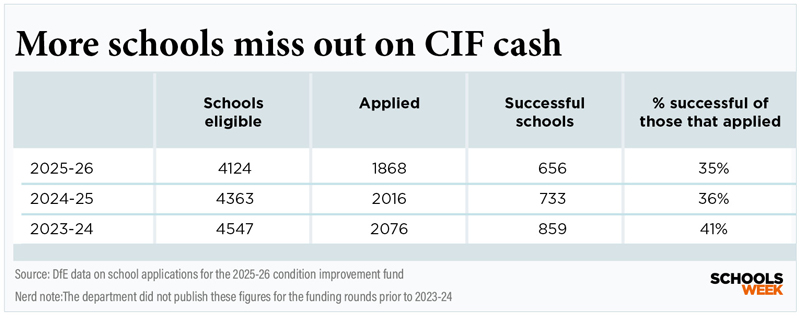
2. North east schools most likely to be snubbed
Like last year, those in the north east and south west were the most likely to be snubbed improvement cash. Only 16 and 23 per cent of schools that applied in these regions received funding.
In the east Midlands and north west, the figure was above 40 per cent.
But when looking at the amount of cash handed out, almost a quarter of the full pot went to schools in London.
This was despite the capital having fewer successful projects (123) than the south east (136), east of England (130) and north west (137).
The government did not provide commentary on its findings, but a key factor in this finding will be building costs in the capital being higher than other regions.
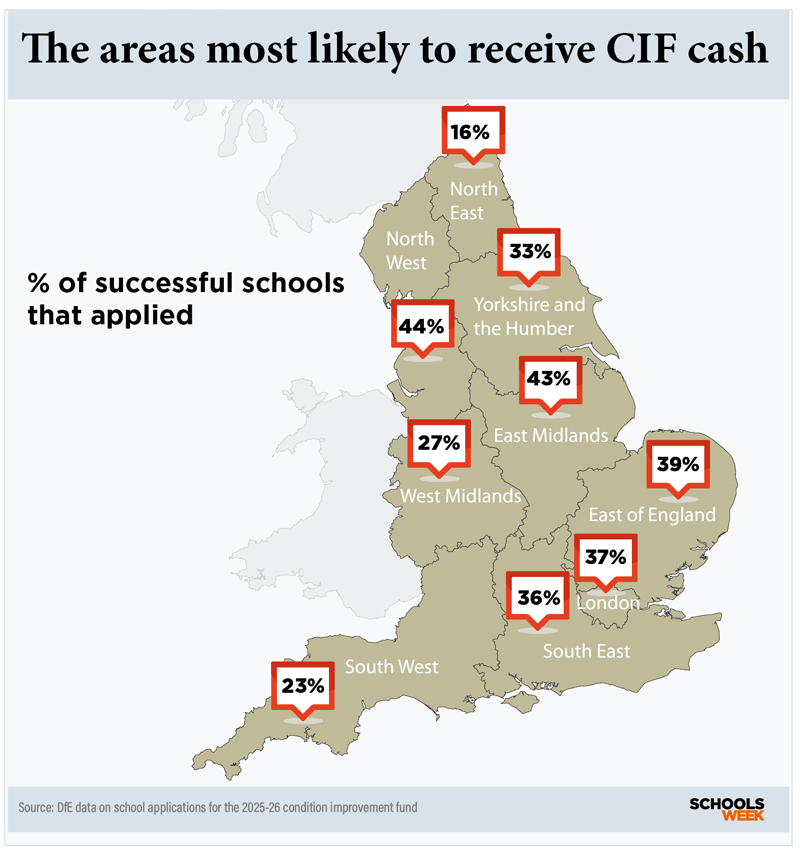
3. Which schools were most likely to get cash?
Of the 656 schools awarded funding, 60 per cent were primaries and just under a third were secondaries. Altogether, 66 per cent of those eligible for CIF are primaries and 23 per cent are secondaries.
As with last year, special schools were the most likely to be refused a share of the CIF pot, as 30 per cent of those that applied were given the go-ahead.
However, this is an improvement on last year, when 22 per cent of special schools that lodged a CIF application were rejected.
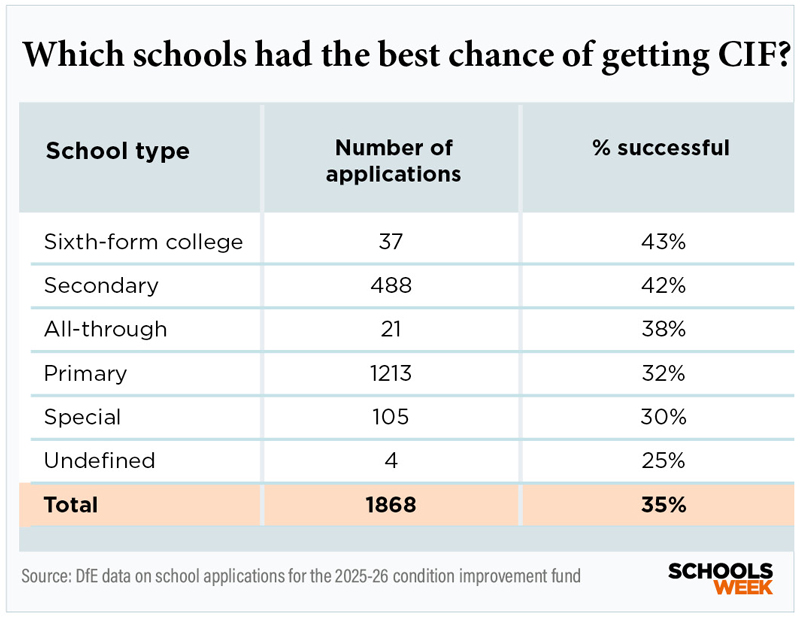
Education secretary Bridget Phillipson said the “investment is about more than just buildings – it’s about showing children that their education matters, their futures matter, and this government is determined to give them the best possible start in
4. Schools don’t have to stump up as much
Government has also published how many projects were successful based on the size of the financial contribution they pledged.
Schools can only get full marks on the funding section of their bid if they pledge to pay more than 30 per cent of the work either out of their own pocket or via a loan, rather than relying fully on grant funding.
Given CIF funding is highly competitive, these marks can make a big difference.
DfE stats show 13 per cent of successful bids were given the highest score of six for the funding section. This is 9 percentage points down on last year.
Instead, almost 70 per cent of successful bids were for projects where the school stumped up less than 15 per cent towards to the project. The figure for last year was 54 per cent.
Warneford thinks this suggests the “playing fields appear to be more level”, as it previously “unfairly advantaged those with greater wherewithal”.
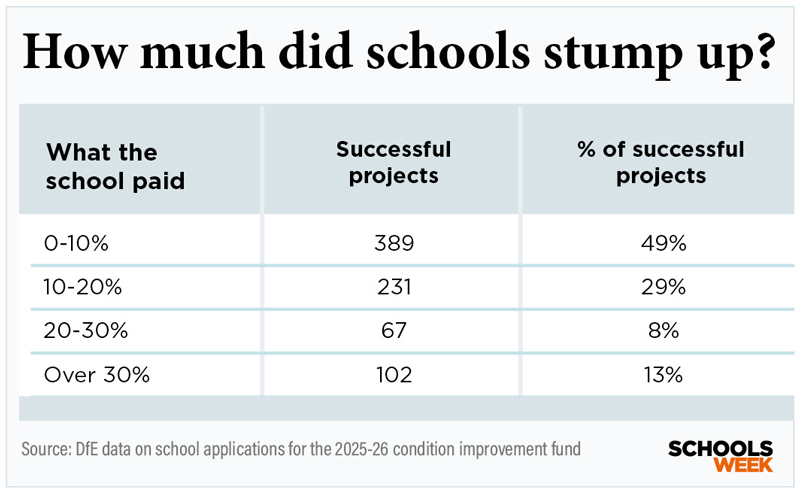






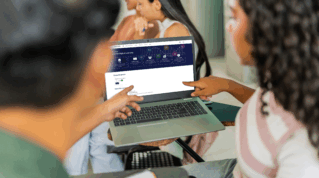








Your thoughts